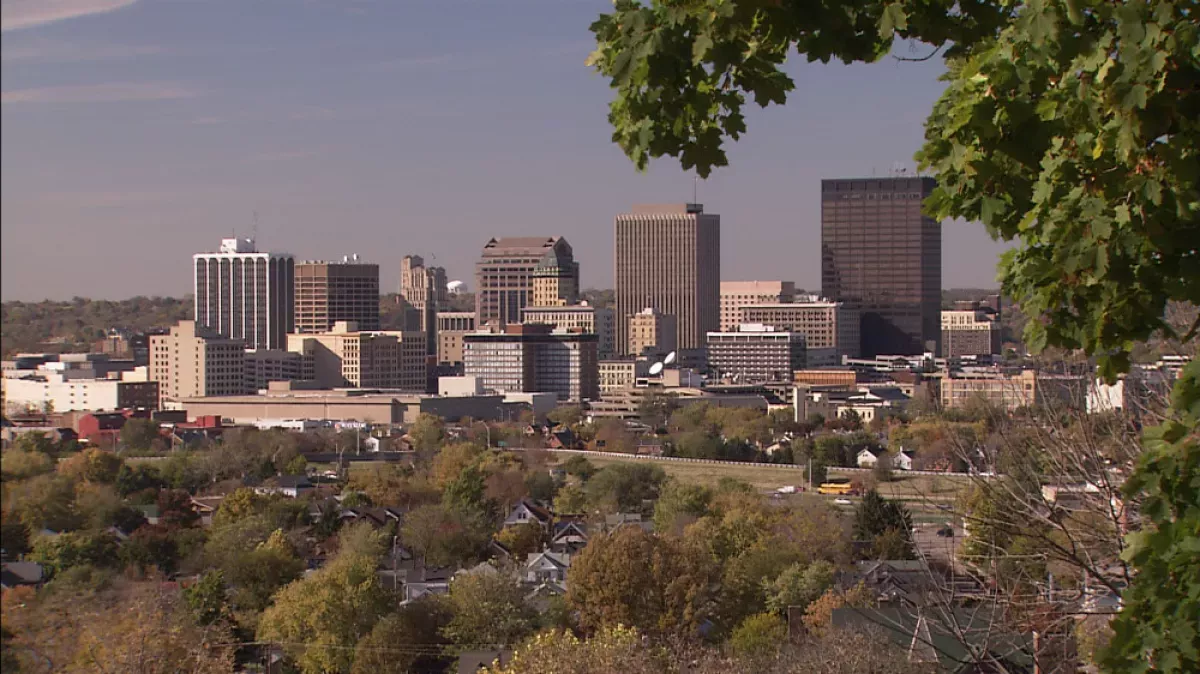Dayton is a city in Ohio, serving as the county seat of Montgomery County and extending slightly into Greene County. With a population of 137,644 (2020 census), it ranks as Ohio's sixth-largest city. Dayton anchors the fourth-largest metropolitan area in the state, encompassing 814,049 residents. Situated in Ohio's Miami Valley, it's strategically located 50 miles north of Cincinnati and 60 miles west of Columbus.
July 22, 1901: Record High Temperature in Dayton
The highest temperature ever recorded in Dayton, Ohio, was 108 °F (42 °C) on July 22, 1901.
March 3, 1904: Opening of the Dayton Arcade
The Dayton Arcade, an architectural landmark, officially opened its doors on March 3, 1904. It was built with the intention of replacing open-air markets scattered throughout the city.
1906: Invention of the First Electric Cash Register
In 1906, Charles F. Kettering, an engineer at the National Cash Register Company (NCR), helped develop the first electric cash register. This invention significantly boosted NCR's prominence nationwide.
March 1913: The Great Dayton Flood
In March 1913, a devastating flood known as the Great Dayton Flood struck the city.
1913: Dayton Pioneers City Manager Government
Dayton became a pioneer in municipal governance in 1913 by becoming the first major American city to adopt the city manager form of government, with Henry Matson Waite as its inaugural city manager.
1914: Establishment of the Miami Conservancy District
Following the Great Dayton Flood in 1913, the Miami Conservancy District, a network of dams and hydraulic pumps, was established around Dayton in 1914 to prevent future flooding.
1919: Air Force Institute of Technology Established
The Air Force Institute of Technology (AFIT), a graduate school for the United States Air Force, was established in 1919 at the nearby Wright-Patterson Air Force Base.
October 3, 1920: First APFA Game Held in Dayton
Dayton hosted the inaugural game of the American Professional Football Association (APFA), the precursor to the NFL, on October 3, 1920. The game took place at Triangle Park between the Dayton Triangles and the Columbus Panhandles, marking a significant moment in professional football history.
1924: Dayton Audubon Society Joins Christmas Bird Count
The Dayton chapter of the National Audubon Society began participating in the annual Christmas Bird Count in 1924.
October 12, 1927: Formal Dedication of Wright Field
Wright Field, a significant aviation facility near Dayton, was formally dedicated on October 12, 1927.
1933: Dayton Trolleybus System Launches
The Dayton trolleybus system commenced operation in 1933, marking the continuation of an electric transit service that has been active in Dayton since 1888. This makes it the second longest-running trolleybus system among the five remaining in the U.S.
December 1942: Alan Turing's Visit to NCR
Alan Turing, a renowned mathematician and computer scientist, visited the National Cash Register (NCR) company in Dayton in December 1942. During his visit, he contributed to the development of the US Navy Bombe, a code-breaking machine instrumental in deciphering German Enigma machine codes during World War II.
1945: PGA Championship at Moraine Country Club
The Moraine Country Club hosted the PGA Championship in 1945.
January 13, 1948: Renaming of Wright-Patterson Air Force Base
On January 13, 1948, Wright Field, Patterson Field, Dayton Army Air Field, and Clinton Army Air Field were merged and renamed Wright-Patterson Air Force Base.
1955: Race Riot Following Emmett Till's Murder
A race riot erupted in Dayton in 1955 following the brutal murder of Emmett Till, a young African American boy, in Mississippi.
1957: Kenley Players Begin Performances
The Kenley Players started their run of live theater productions in Dayton in 1957, contributing to the city's vibrant arts scene.
1957: PGA Championship at Miami Valley Golf Club
The Miami Valley Golf Club hosted the prestigious PGA Championship in 1957.
1960: Peak Population in Dayton
Dayton's population peaked in 1960 at 262,332 residents.
1964: Dayton Gems Founded
The Dayton Gems, a minor league ice hockey team, were founded in 1964, marking the beginning of their presence in the International Hockey League.
1966: The 1966 Dayton Race Riot
A significant race riot occurred in Dayton in 1966, reflecting the racial tensions and unrest prevalent in many American cities during the Civil Rights Movement.
1967: Race Riots in Dayton
Two race riots transpired in Dayton in 1967. One followed a speech by civil rights activist H. Rap Brown, while the other was sparked by the police killing of an African American man.
1967: Wright State University Achieves State University Status
Wright State University, a public institution, was officially designated as a state university in 1967.
1968: King Assassination Riots
Dayton experienced a race riot in 1968 as part of the nationwide riots that followed the assassination of civil rights leader Martin Luther King Jr.
1970: New Town Funding
In 1970, the federal government funded thirteen "new towns", including one planned as a suburb of Dayton, called Brookwood or Newfields.
1970: Jim Hill Leads Dayton Christmas Bird Count
Jim Hill took over as coordinator of the Dayton Christmas Bird Count in 1970, succeeding Ben Blincoe.
1977: First Era of Dayton Gems Ends
The Dayton Gem's time in the International Hockey League came to an end in 1977.
1978: New Town Project Abandoned
The Brookwood/Newfields project, a planned suburb of Dayton, was abandoned in 1978. Much of the land became Sycamore State Park.
October 1979: Last long-distance passenger train departs Dayton Union Station
In October 1979, the National Limited became the last long-distance passenger train to depart from Dayton Union Station on S. Sixth Street. Prior to Amtrak, the station served the Baltimore and Ohio Railroad, New York Central Railroad, and the Pennsylvania Railroad.
1979: Dayton Gems Return Briefly
After a brief hiatus, the Dayton Gems returned to the International Hockey League in 1979.
1980: Dayton Gems Fold Again
The Dayton Gems once again ceased operations in 1980, marking the end of their second stint in the International Hockey League.
1986: U.S. Women's Open at NCR Country Club
The NCR Country Club hosted the U.S. Women's Open in 1986.
1991: Dayton Bombers Enter ECHL
The Dayton Bombers joined the East Coast Hockey League (ECHL) in 1991, marking the beginning of their run in the league.
1993: Dayton Weekly News Begins Publication
The Dayton Weekly News, a publication providing news and information to Dayton's African-American community, was established in 1993.
1995: Dayton Agreement
The Dayton Agreement, a peace accord aimed at ending the conflict in Bosnia-Herzegovina and the former Yugoslavia, was negotiated at Wright-Patterson Air Force Base near Dayton from November 1 to 21, 1995.
1995: Kenley Players End Performances
The Kenley Players ended their run of live theater productions in Dayton in 1995, marking the end of an era for the city's theater scene.
1996: National Folk Festival in Dayton
The National Folk Festival was held in Dayton from 1996 to 1998.
1998: End of National Folk Festival, Start of Cityfolk Festival
After hosting the National Folk Festival for three years, Dayton saw its conclusion in 1998. The Cityfolk Festival, focused on folk, ethnic, and world music and arts, was then established.
2000: Opening of Day Air Ballpark
Day Air Ballpark, the home of the Dayton Dragons minor league baseball team, was built in 2000.
2001: Creation of RiverScape MetroPark
Five Rivers MetroParks, Dayton's public park system, built RiverScape MetroPark in 2001. This outdoor entertainment venue attracts over 400,000 visitors annually.
2003: Opening of the Schuster Center
The Schuster Center, a new performance arts theater in Dayton, opened its doors in 2003.
2003: Beginning of Crime Rate Decline
This marks the start of a period between 2003 and 2008 when Dayton saw a decrease in major crime categories.
2005: U.S. Senior Open at NCR Country Club
The NCR Country Club hosted the U.S. Senior Open in 2005.
2008: Dayton International Airport serves 2.9 million passengers
In 2008, Dayton International Airport served 2.9 million passengers and offered service to 21 markets through 10 airlines. The airport also served as a major air freight hub for FedEx Express, UPS Airlines, the United States Postal Service, and other commercial freight carriers.
2008: KeyBank Gains Naming Rights
In 2008, KeyBank gained naming rights to the building formerly known as the MeadWestvaco Tower.
2008: Dayton's Economic Development Ranking
Site Selection magazine ranked Dayton as the top medium-sized metropolitan area in the U.S. for economic development in both 2008 and 2009.
2008: Impact of the National Housing Crisis
The national housing crisis that began in 2008 significantly impacted Dayton, contributing to the city's population decline. The crisis exacerbated the loss of manufacturing jobs and the decentralization of metropolitan areas, hitting Dayton harder than many other cities in Ohio.
2008: End of Crime Rate Decline
This marks the end of a period between 2003 and 2008 when Dayton saw a decrease in major crime categories.
June 2009: Dayton Bombers Fold
The Dayton Bombers, an ECHL ice hockey team, announced the return of their league membership in June 2009, marking the end of the team.
2009: Continued Crime Reduction
Dayton experienced a continuing decline in crime in 2009, with significant decreases across several categories, including a 40% overall drop.
2009: Dayton Gems Reform
Following the closure of the Dayton Bombers, a new Dayton Gems team was established in the fall of 2009 as part of the International Hockey League, bringing hockey back to Dayton.
2009: Dayton Ranked High for Higher Education
Forbes ranked Dayton tenth among metropolitan areas in the United States for higher education in 2009.
2009: Dayton Designated as Aerospace Hub
Governor Ted Strickland named Dayton as Ohio's first aerospace innovation hub in 2009, acknowledging the region's significant contributions to aviation and aerospace technology.
2009: CareSource Management Group Headquarters Completion
In 2009, the CareSource Management Group completed the construction of their new corporate headquarters in downtown Dayton. The $55 million, 10-story building marked the first new office tower in the downtown area in over a decade.
2009: Dayton's Economic Development Ranking (continued)
Site Selection magazine ranked Dayton as the top medium-sized metropolitan area in the U.S. for economic development in both 2008 and 2009.
2010: Census Data
According to the 2010 census, Dayton had a population of 141,759, with 58,404 households residing in the city. The racial makeup showed a decrease in the White population compared to previous decades.
2010: Job Market Recognition
Bloomberg Businessweek recognized Dayton as a prime location for college graduates entering the job market in 2010.
2010: Ethnic Demographic Shift
Dayton's demographics shifted significantly between 1960 and 2010, with the White population declining from 78.1% to 51.7%.
2010: Dayton's Export Ranking and GDP
In 2010, Dayton ranked highly in exports and export-related jobs. The Brookings Institution estimated $4.7 billion in exports and 44,133 export-related jobs. Dayton also had the 4th highest GDP in Ohio at $33.78 billion.
2010: Ohio Department of Transportation begins I-75 reconstruction project
In 2010, the Ohio Department of Transportation (ODOT) began a $533 million project to modify, reconstruct, and widen Interstate 75 through downtown Dayton.
2010: Introduction of the Greater Downtown Dayton Plan
The Downtown Dayton Partnership, in collaboration with the City of Dayton and community leaders, introduced the Greater Downtown Dayton Plan in 2010.
2010: Dayton Earns "Bike Friendly" Designation
The League of American Bicyclists awarded Troy, a city within the Dayton metropolitan area, a bronze "bike friendly" designation in 2010. This honor recognized the city's commitment to cycling infrastructure and made Dayton one of only two cities in Ohio to receive the award.
2011: Dayton Charter Schools Recognized
In 2011, three of the top five charter schools were recognized in Dayton, all of which were K-8 schools operated by National Heritage Academies.
2011: Dayton Gems Fold, Demonz Rise
The Dayton Gems folded once again in 2011, shortly after which the Dayton Demonz were formed, set to begin playing in the Federal Hockey League (FHL) in 2012.
2012: UD Arena Hosts NCAA Tournament Games
In 2012, the University of Dayton Arena (UD Arena) hosted eight teams competing for a spot in the NCAA basketball tournament. This venue is known for hosting more NCAA men's basketball tournament games throughout its history than any other.
2012: Dayton Demonz Take the Ice
The Dayton Demonz, a new hockey team in the Federal Hockey League (FHL), played their inaugural season in 2012.
2012: Dayton Gems Fold for a Third Time
The Dayton Gems, after a period of revival, folded for a third time in 2012, concluding their journey in the International Hockey League.
2013: John Kenley Inducted into Dayton Theatre Hall of Fame
In 2013, John Kenley, the driving force behind the Kenley Players, was honored for his contributions to Dayton's theater with an induction into the Dayton Theatre Hall of Fame.
2013: State Team Championships at NCR Country Club
The State Team Championships were held at the NCR Country Club in 2013.
2015: Ted Rall on Dayton's Demolition
In 2015, Ted Rall commented on Dayton's demolition of architecturally significant buildings over the preceding five decades, suggesting it was done to manipulate the city's rental vacancy and occupancy rates.
2015: Demونز Demolished, Demolition Emerges
The Dayton Demonz folded in 2015, but the Dayton Demolition, also playing in the FHL, immediately replaced them.
2015: Baseline for Homicide Rate
This entry provides a baseline for homicide rates in 2015, which saw a significant increase in 2016.
2016: Increase in Homicides
Dayton experienced a 39.3% increase in homicides in 2016, with the Dayton Police Department reporting 39 murders.
2016: Start of American Community Survey Period
This entry marks the beginning of the period from 2016 to 2020 during which the U.S. Census American Community Survey collected data on income and poverty levels in Dayton.
2017: Ohio Department of Transportation completes I-75 reconstruction project
In 2017, The Ohio Department of Transportation (ODOT) completed a $533 million project to modify, reconstruct, and widen Interstate 75 through downtown Dayton. The project spanned from Edwin C Moses Blvd. to Stanley Avenue.
2018: Dayton Area Rugby Club Thrives
As of 2018, the Dayton Area Rugby Club had expanded to include two men's teams, one women's team for Rugby Union, and several Rugby Sevens sides. They also host the annual Gem City 7's tournament.
2018: Dayton City Paper Ceases Publication
The Dayton City Paper, known for its focus on music, art, and independent thought, ceased operations in 2018.
August 4, 2019: Mass Shooting in Dayton
A tragic mass shooting occurred in Dayton on August 4, 2019, resulting in the death of ten people, including the perpetrator, and injuries to twenty-seven others.
2019: Dayton Named Outdoor Adventure Capital
In 2019, National Geographic recognized Dayton as the outdoor adventure capital of the Midwest. This was largely thanks to the revitalized Five Rivers MetroPark, the city's expansive trail system, and various urban green spaces, lakes, and camping areas.
2019: Tornado Outbreak in Dayton
On Memorial Day in 2019, a series of 15 tornadoes touched down in the Dayton area, causing significant property damage and one fatality. One tornado, rated EF4, caused particularly severe damage as it passed through Brookville, Trotwood, Dayton, Northridge, and Riverside.
2019: Comprehensive Annual Financial Report
The city of Dayton released its 2019 Comprehensive Annual Financial Report.
2020: 2020 United States Census
As of the 2020 United States Census, the city of Dayton had a population of 137,644, making it the sixth-most populous city in Ohio.
2020: Population Decline in Dayton
By 2020, Dayton's population had declined significantly to 137,644 residents, partly due to a manufacturing slowdown.
2020: Census Data
The 2020 census recorded 137,644 people in Dayton, with a population density of 2,466.47 people per square mile. The racial makeup was diverse, with White residents making up 47.6% of the population.
2020: Target Implementation Year for the Greater Downtown Dayton Plan
The Greater Downtown Dayton Plan, focusing on job creation, infrastructure improvements, housing, recreation, and collaboration, was set to be implemented through the year 2020.
2020: End of American Community Survey Period
This entry marks the end of the period from 2016 to 2020 during which the U.S. Census American Community Survey collected data on income and poverty levels in Dayton.
2022: Senior Women's Open at NCR Country Club
The NCR Country Club most recently hosted the Senior Women's Open in 2022.
Mentioned in this timeline
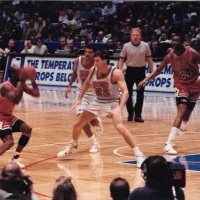
Basketball is a team sport played on a rectangular court...
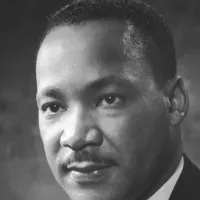
Martin Luther King Jr was a pivotal leader in the...

FedEx Corporation originally Federal Express is a multinational conglomerate based...
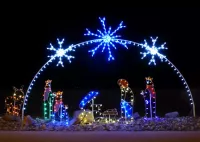
Christmas is an annual festival celebrated on December th commemorating...
Pennsylvania is a U S state located in the Mid-Atlantic...
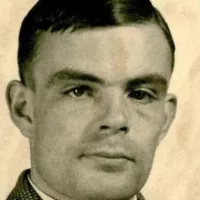
Alan Mathison Turing was a highly influential English mathematician computer...
Trending

18 days ago Billy Strings Teases Spring 2026 Tour Dates and Shares Activity Sheet.

Noah Schnapp is an American actor primarily recognized for portraying Will Byers in the popular Netflix series Stranger Things Beyond...

Monster Naoya Inoue is a Japanese professional boxer celebrated for his incredible punching power boasting an knockout-to-win ratio and a...

8 months ago Global Fight League faces collapse, inaugural events cancelled, Paige VanZant announces free agency.

6 months ago Aaron Rodgers' Marriage Sparks Family Drama; Quarterback Finds Solace with Steelers

2 months ago Lily Allen Opens Up About Marriage to David Harbour and Personal Struggles.
Popular

Candace Owens is an American conservative political commentator and author...

Tucker Carlson is an American conservative political commentator known for...

XXXTentacion born Jahseh Dwayne Ricardo Onfroy was a controversial yet...

Ilhan Omar is an American politician currently serving as the...

Kashyap Pramod Patel is an American lawyer who became the...

Bill Gates an American businessman and philanthropist revolutionized personal computing...
